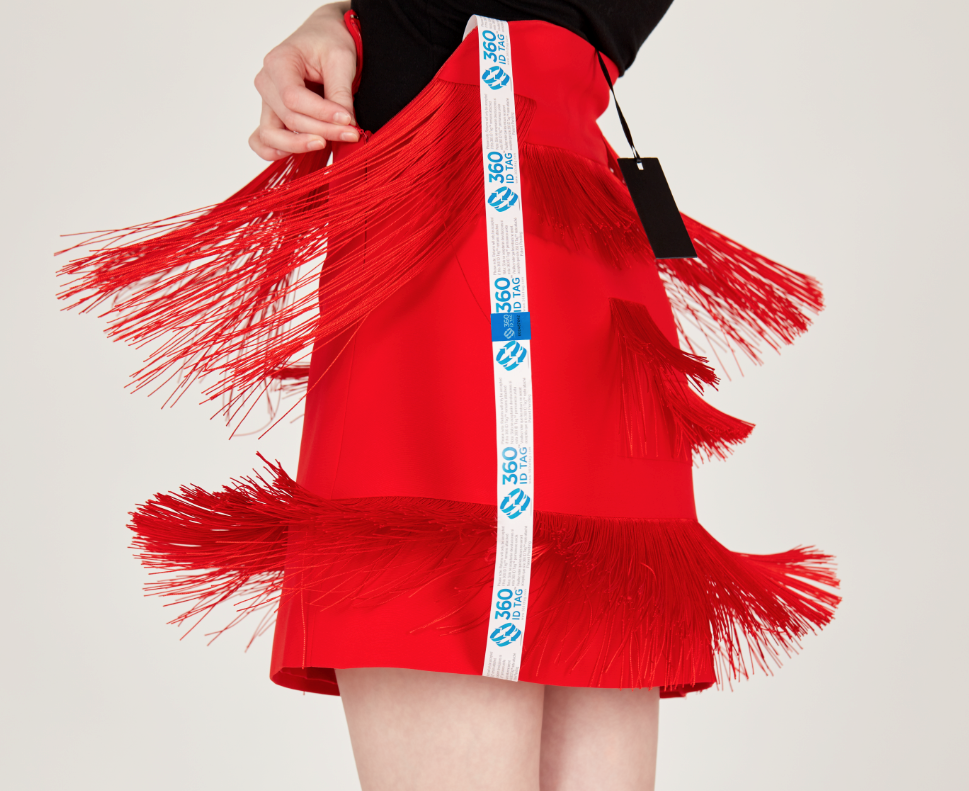
THE TAG BLOG
E-Commerce's New Secret Weapon for Return Fraud Prevention
JANUARY 11 2023
FREE RETURNS ARE ANYTHING BUT FREE
The pandemic pivot towards e-commerce caused some ongoing shopping trends to accelerate tremendously over a relatively short period. In light of the explosion in e-commerce activity and owing to Covid-19 restrictions that prevented many consumers from trying on items in person, many online retailers graciously expanded their return policies. This allowed consumers to treat their homes as quasi dressing rooms and return unsuitable apparel items for no extra charge.
As anyone involved in online retail will attest, free returns are anything but free. While this perk encouraged many shoppers to embrace online shopping, it has also led to high costs for e-commerce businesses of all stripes. Shipping, processing, and restocking all cut a business's profit margins heavily. What is worse, the explosion in online shopping seems to have accelerated this trend.
WHY DO SHOPPERS COMMIT RETURN POLICY ABUSE?
Fundamentally, a misalignment in incentives is driving bad shopper behavior. Economists call this the free-rider problem, which describes a scenario where one group pays for a resource while another group uses the resource at a free or reduced cost. This incentivizes the users to consume more of that resource than they would under normal circumstances.
The free-rider problem has helped explain various maladaptive consumer behavior across a broad sweep of industries ranging from health insurance to education. Policymakers and corporate executives have spent countless hours creating incentive structures that discourage consumers from taking more than their fair share.
In the context of return policies, the free-rider problem is all too evident.
Free returns pose zero cost to the consumer while representing a significant expense for online retailers.
Free returns pose zero cost to the consumer while representing a significant expense for online retailers. Consumers who abuse return policies are not necessarily bad people, and they do not always act with ill intent. They are simply using the resources available to them in a way that maximizes their own utility.
The anonymous nature of online retail only exacerbates this problem. People become less mindful of their actions and their impact on others when facing a computer screen. When you take the human element out of the equation, otherwise thoughtful and conscientious individuals automatically care less about the harm they're doing. Ultimately, retailers must understand why consumers abuse return policies if they're to fix the problem.
Photo Credit Andrey Popov via Getty Images

The anonymous nature of e-commerce exacerbates the problem of return policy abuse.
WHAT IS HOLIDAY RETURN POLICY ABUSE
Shoppers commit return abuse and e-commerce fraud for several reasons. Some of the primary motivations behind the practice include the following:
Bracketing
Bracketing is the practice of purchasing multiple iterations of the same product but in different sizes and colors. Shoppers bracket with the intent to return undesirable apparel items. Businesses can reduce this practice by providing software solutions such as Truefit, which allow consumers to try on clothes virtually. Online retailers, following Zara's lead, can disincentivize the practice by charging customers a return fee or by only offering free returns to customers who qualify for VIP programs.
Social Media and One-Off Events
The wardrobing trend has seen Instagram influencers and partiers take advantage of lax return policies to order clothes they have no intention of keeping. Social media influencers and fashion bloggers are known culprits of purchasing one-off outfits to complete a fashion shoot before returning the clothes at no charge to themselves, leaving the online retailer to pick up the bill.
Another common trend has seen an increase in ordering high-end fashion items for one-off events like parties, galas and family photos with the intention of immediately returning the items after the event. Aside from the cost of shipping and processing a return, even light usage can dramatically reduce the resale value of the merchandise.
In many cases, retailers find it more economical to discard the item entirely.

Social norms dictate that people won't attend their holiday party with a visible tag showing.
Inflation and Economic Uncertainty
The current economic environment has consumers tightening their belts with fears of a looming recession has many consumers reducing unnecessary expenditures. A survey conducted in June of this year shows 83% of Americans are cutting personal spending in the face of rising inflation.
With this in mind, it is anticipated that many consumers will take advantage of lax return policies to essentially borrow new clothes free of charge. Bad actors will continue to exploit generous return policies, expanding their wardrobes at no cost to themselves. Meanwhile, retailers are left to shoulder return costs with no means to recoup the losses.
HOW RETURNS IMPACT E-COMMERCE BUSINESSES
In 2021, U.S. retailers lost $761 billion in sales due to returns, representing 16.6% of total revenue. While it's unlikely that retailers will ever bring this number to zero, it can undoubtedly be improved upon.
To further contextualize return expenses for e-commerce businesses, one estimate from Optoro put the cost of returning a $50 sweater bought online to be $33, or 66% of the sweater's purchase price. With free returns having moved firmly into the mainstream, this represents a significant threat to the bottom line of most online retailers.
Consumers have come to expect that e-commerce businesses will pay for return shipping.
That's to say nothing of the costs associated with cleaning, repackaging, retagging, and handling lightly used clothing. These costs have led some businesses to ask consumers to keep items eligible for return, further incentivizing maladaptive behaviors.
Aside from acting as a cost center, lax return policies disrupt vital forecasting functions. Businesses have a more challenging time keeping track of inventory and managing stock levels, particularly with seasonal items, when receiving substantial returns.
HOW TO PREVENT HOLIDAY RETURN POLICY ABUSE
With the holidays upon us, the opportunities for return abuse have expanded. Not only do many online retailers make it easier to return items over the holidays with extended return windows well into January, but many consumers double down on return policy abuse by ordering outfits for events like holiday parties and returning them within the allowable timeframe.
Savvy retailers can cut down on these practices with anti-return fraud tags. These highly-visible tags wrap around clothing, shoes and accessories, allowing individuals to inspect the merchandise at home while remaining eligible to return. Shoppers must cut off the anti-fraud tag if they want to wear the merchandise, making for a predictable returns process for buyers and e-commerce businesses.
Anti-fraud tags are tamper-evident and do not impede consumers from trying on clothes for size or fit. They have the added benefit of strengthening the legitimate function of an e-commerce return policy. However, their obtrusive nature dissuades shoppers from wearing items to holiday parties or taking photos for social media, making them a potent and essential loss-prevention tool.

Clothing with an anti-return fraud tag can still be assessed at home for fit and style.
CHELSEA DUHS - FOUNDER 360 ID TAG
Chelsea Duhs is the Founder of 360 ID Tag, a highly visible, anti-return fraud tag designed to help e-commerce businesses prevent return policy abuses like wardrobing, wear and return, and counterfeit product switches.
LATEST ARTICLES
Wardrobing 2025: How E-Commerce Is Fighting Back Against Return Fraud
E-commerce returns are expected to reach $850 billion in 2025, with nearly one in ten proven to be fraudulent. As shoppers demand free, flexible returns, retailers are struggling to combat costly behaviors like wardrobing—buying, wearing, and returning items as “unused.” The NRF 2025 Retail Returns Landscape reveals that 45% of consumers admit to bending the rules, highlighting the urgent need for visible, tamper-evident solutions. The 360 ID Tag gives retailers the proof they need to distinguish honest returns from abuse—protecting profit margins while preserving a seamless customer experience.
Read moreWardrobing: how e-commerce merchants can combat return fraud
👗 Wear. Post. Return. It’s called wardrobing—and half of all retailers are still battling it in 2025. Our latest blog breaks down why this return fraud continues to thrive and how businesses can finally put a stop to it.
Read moreTackling Fraudulent Returns: Survey Confirms Wardrobing as the #1 Culprit
Today, return fraud has evolved into a costly and ongoing challenge for businesses. Wardrobing, where customers buy merchandise, use it briefly, and then return it for a full refund, is particularly disruptive. Secure Authentication Brands recently conducted a survey to understand the impact of return fraud and gather insights from business leaders on their most pressing concerns. Here's what we found and how our anti-return fraud tagging solution is helping companies turn the tide.
Read more



